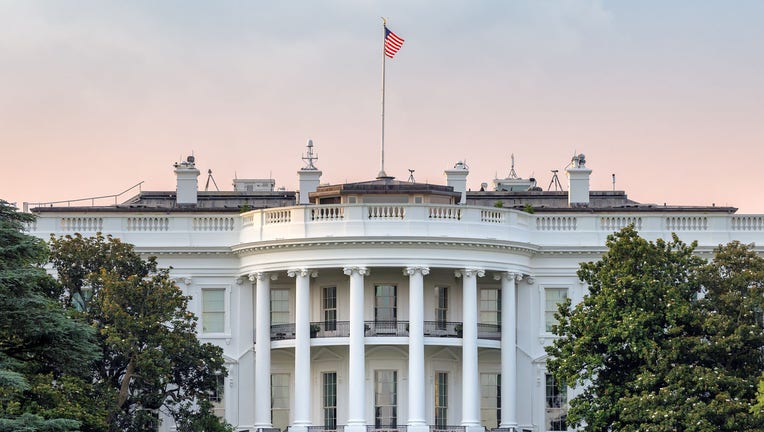Biden administration cancels another $5.8B in student loan debt: Here's who qualifies

More than 323,000 federal student loan borrowers with a total and permanent disability (TPD) will have their college debt automatically discharged by the end of the year. Read on to see who qualifies, and what you should do with your debt if you're n
The U.S. Department of Education under President Joe Biden announced on Thursday that it will cancel another $5.8 billion worth of student loan debt by the end of 2021 for over 323,000 borrowers who have a total and permanent disability (TPD). The average discharged loan amount is approximately $18,000.
This is the largest student loan forgiveness measure put in place since Biden took office, the Education Department said in a press release. In total, the Biden administration has forgiven about $8.7 billion worth of student loan debt for roughly 455,000 borrowers.
Using existing data from the Social Security Administration (SSA), the Education Department will automatically discharge the college debt of qualified borrowers beginning in September. Previously, borrowers had to begin the TPD discharge process on the Federal Student Aid (FSA) website.
Keep reading to see who will have their student loans discharged under this program. If you don't meet the eligibility requirements for student loan forgiveness, learn more about your alternatives like economic hardship deferment, income-driven repayment plans and student loan refinancing. If you decide to refinance your private student loans, compare interest rates across multiple lenders on Credible without impacting your credit score.
BIDEN ADMINISTRATION CANCELS $500M OF STUDENT LOAN DEBT UNDER BORROWER DEFENSE
Who qualifies for a total and permanent disability discharge?
More than 323,000 federal student loan borrowers with total and permanent disabilities will have their federal student loan debt automatically discharged thanks to a new regulation that allows the Education Department to utilize already-existing administrative data. This includes borrowers who have a disability that's identifiable through the Social Security Administration (SSA) and the Department of Veterans Affairs (VA).
Eligible borrowers will have their federal Direct loans, Federal Family Education Loan (FFEL) Program loans and/or Perkins loans forgiven. TPD borrowers who were part of the Teacher Education Assistance for College and Higher Education (TEACH) Grant Program will no longer need to meet their TEACH grant service obligation to have their loans discharged.
If you think you may qualify for a TPD discharge but your disability is not recorded by the SSA or VA, you can apply on the FSA website by getting a physician's certification. Your doctor will need to confirm that your disability could result in death, or that it has lasted continuously for at least five years or could last for the next five years.
BIDEN ADMIN REVERSES TRUMP-ERA STUDENT LOAN POLICY LIMITING STATE OVERSIGHT
What to do if you don't qualify for student loan forgiveness
While hundreds of thousands of Americans with a total and permanent disability will soon have their student loan debt canceled, that's just a fraction of the country's 45 million student loan borrowers who owe more than $1.7 trillion worth of student loan debt, per Federal Reserve data.
Borrowers who don't qualify for a TPD discharge have a few options for managing their student loans:
- Apply for additional forbearance. Federal student loan payments are paused until January 31, 2022, thanks to the most recent extension of COVID-19 forbearance. But when student loan payments resume in February, borrowers who can't pay their loans can apply for economic hardship deferment or unemployment deferment. These programs grant eligible federal borrowers up to 36 months of additional forbearance.
- Enroll in an income-driven repayment (IDR) plan. An IDR plan limits your federal student loan payments to a certain percentage of your discretionary income, typically 10-20%.
- Refinance your private student loans. Private student loan debt won't be impacted by federal cancellation measures like TPD. If you're looking to lower your monthly private student loan payment, consider refinancing to a lower interest rate or a longer repayment term.
SENATE BILL PROPOSES NO-INTEREST FEDERAL STUDENT LOANS: WHAT YOU NEED TO KNOW
Borrowers may not want to refinance their federal student loans, however, since federal loan payments are paused until February 2022. Refinancing your federal student loans into a private student loan makes you ineligible for federal protections like forbearance, IDR plans and even student loan forgiveness.
If you have private student loans, though, there's never been a better time to refinance your college debt. Private student loan refinance rates are near historic lows, and borrowers can save more than $250 per month by refinancing to a longer-term loan on Credible. You can compare rates from student loan refinancing lenders in the table below.
SENATE BILL TARGETS STUDENT LOANS IN BANKRUPTCY
Have a finance-related question, but don't know who to ask? Email The Credible Money Expert at moneyexpert@credible.com and your question might be answered by Credible in our Money Expert column.

